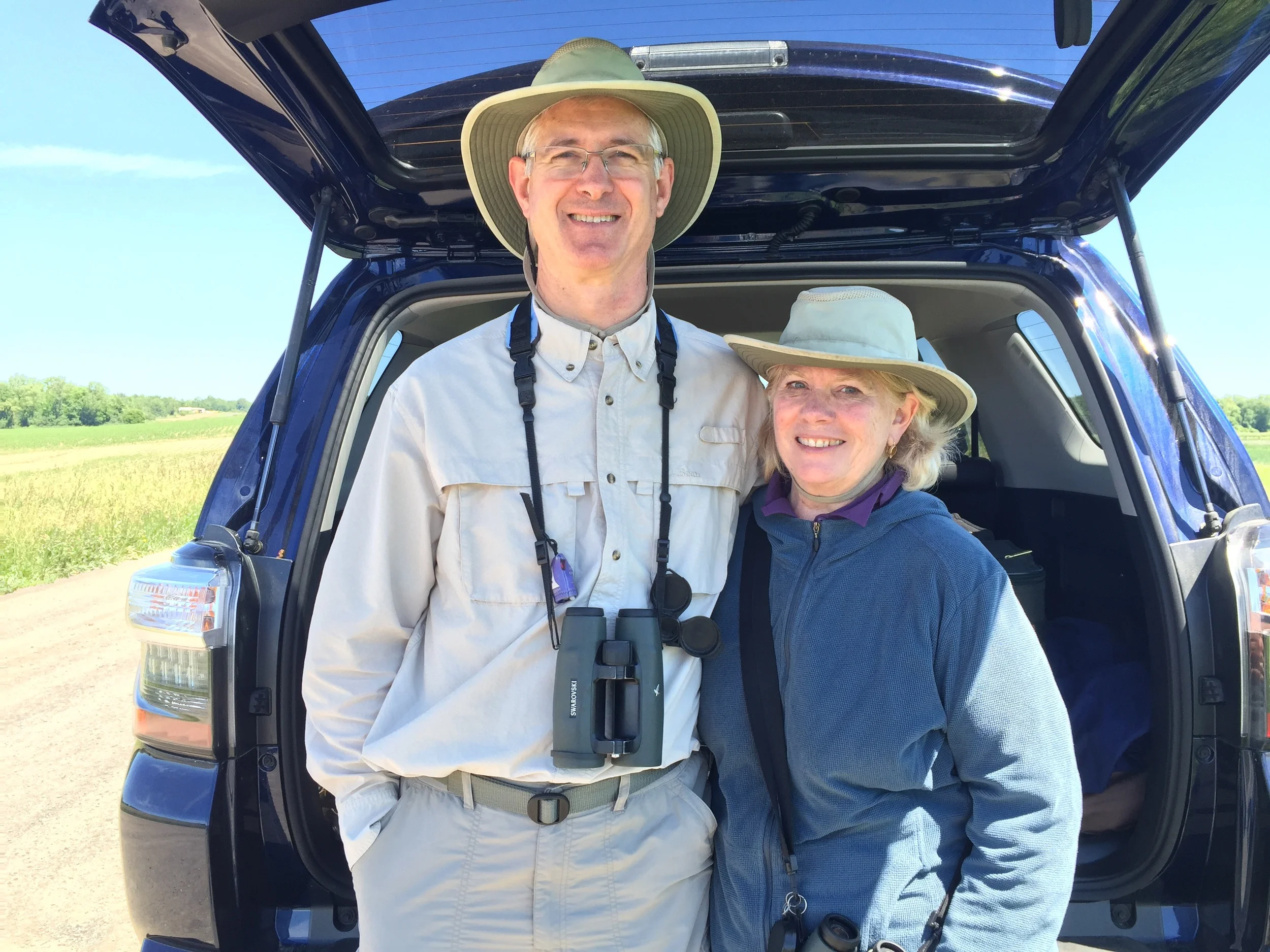Birds need our help.
Technology: A Tool for Conservation
In 2016, The Birding Project met with researchers, graduate students, college professors, and citizen scientists, to learn and understand how technology is being used to help us understand more about birds. Since then, Christian has traveled in search of stories from those on the ground of conservation. From fighting the Border Wall to tracking long-distance migrants, technology is being used to make tangible change across the continent- and world.
Robotic Sage Grouse are being used to learn about behavior and human disturbance
Conservation
Cutting-edge robotic Sage Grouse are being employed in a unique study in Wyoming's Sagebrush Sea, providing valuable insights into the process of sexual selection. Through a better understanding of bird behavior, migratory movements, and response to human activities, we can make informed decisions about how to protect bird habitat in the places it matters most.
Geolocators help track Swainson's Thrush
Technology and Education
As technology improves, so does our understanding of how to apply it to learning about birds. Migration routes that before were unknown are now highlighting important pieces of habitat that need to be protected. Teaching students how to use these tools is an important job in ensuring the next generation of ornithologists.
connecting birders one story at a time
Over the course of a year I asked dozens of people the same questions about birds. What I learned was fascinating
Beth
"My grandmother... had a friend who was a birder and she was given a Peterson guide. When she turned 90, [we took] Grandma to the Valley and it was probably going to be her last trip. We went... and saw all these great birds. She passed away in August that year. Of course i think about her every time I go out birding. I miss her. I feel like I have to keep her legacy going."
Henry and Deb
While in upstate New York, I met this birding couple at Montezuma NWR looking for a Garganey. As we talked, I realized birding had brought them together- first as friends, and then their shared love for birds evolved into a mutual love for each other. They are involved in young birder programs, building a sense of community and teaching the next generation of birders.
Raymond
"Birding is... the best way to learn about the planet and learn to appreciate what we have. I think that is what allows us to really try to affect change, and fight for protecting what natural spaces are left on the planet, and changing the attitudes of people so that we can hopefully begin to restore what we’ve lost and restore human connection with nature through birds."
Like these stories? Check out the blog for more interviews!
SUPPORT THE BIRDING PROJECT
DRIVE. HIKE. BIKE. HITCHHIKE.
50,000+ miles driving, 1,000+ miles walking, 100+ miles biking, 10+ miles thumbing for birds can be a daunting task- especially if you have no job and a limited budget. However, having the right attitude and self-discipline to persist, the goals on the horizon are truly closer than they seem.
DON'T LOOK BACK.
In 2016, Christian drove over 50,000 miles, crossing the country multiple times, following migrating birds and visiting locations he'd dreamed of exploring since reading Kingbird Highway - Kenn Kaufman's written account of his record-breaking Big Year in the 1970's. Inspired by a low-buget big year, Christian slept in his Subaru Outback, shopped for groceries, and mastered key "travel hacks" - shortcuts that saved thousands of dollars in 2016. His story is truly inspiring, and will be shared this year in his talks and new book.
SNOWSHOE. CRUISE. SWIM.
Anyone can bird from a boardwalk or nature trail.
The real adventure begins when you leave the path, and make your own.
2016 BIG YEAR TRACKS
Zoom in on the map to see where Christian traveled in 2016 on his record-breaking Big Year.
Key: Jan-Mar: Yellow April-Jun: Blue Jul-Sep: Green Oct-Dec: Red




